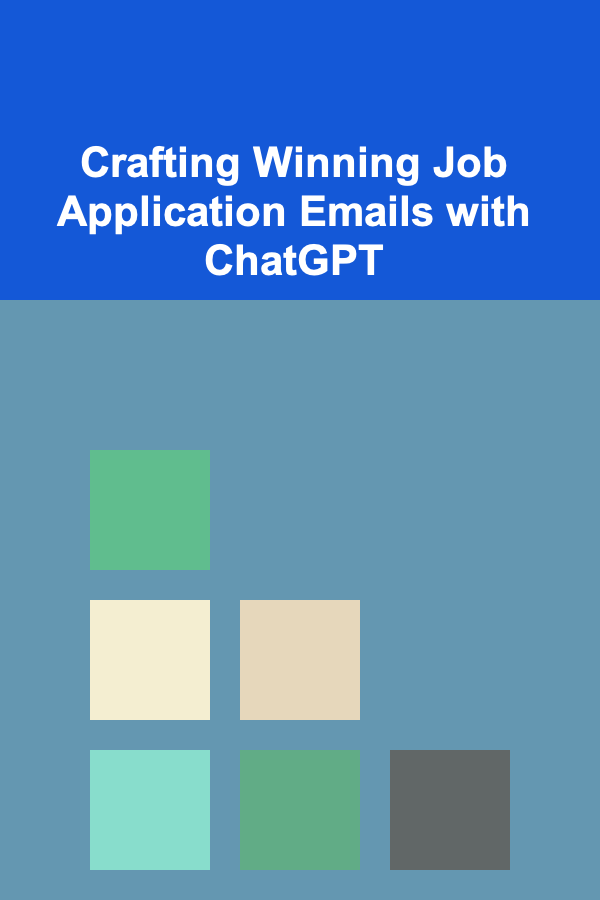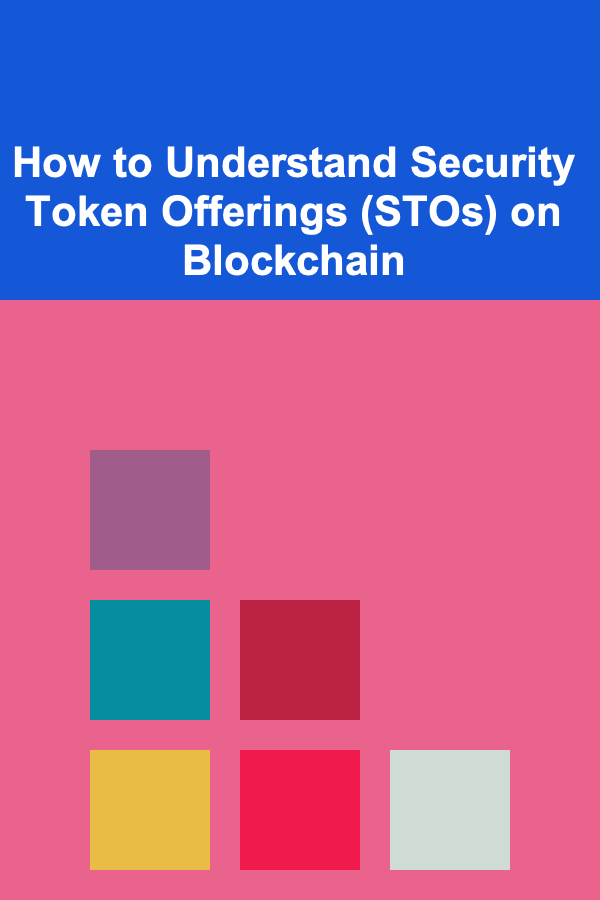
Crafting Winning Job Application Emails with ChatGPT
ebook include PDF & Audio bundle (Micro Guide)
$12.99$11.99
Limited Time Offer! Order within the next:

In today's competitive job market, a compelling application email can be the crucial difference between landing an interview and being overlooked. While crafting such an email requires careful consideration, creativity, and a tailored approach, the advent of Large Language Models (LLMs) like ChatGPT offers a powerful new tool for job seekers. This article delves into the strategic use of ChatGPT to write effective job application emails, exploring its capabilities, limitations, and best practices for achieving optimal results.
Understanding the Landscape: Job Application Emails in the Modern Era
Job application emails serve as a candidate's initial introduction to a potential employer. They are more than just a formality; they are a critical opportunity to:
- Make a Strong First Impression: The email's tone, clarity, and professionalism immediately shape the recruiter's perception.
- Highlight Relevant Skills and Experience: The email should concisely showcase the candidate's most valuable qualifications related to the specific job description.
- Demonstrate Enthusiasm and Interest: Conveying genuine excitement about the company and the role is crucial.
- Stand Out from the Crowd: In a sea of applications, a well-crafted email can help a candidate differentiate themselves.
- Provide Context for the Resume and Cover Letter: The email serves as a brief introduction to the accompanying documents, guiding the reader's attention to key information.
A generic, poorly written email can immediately disqualify a candidate, regardless of their qualifications. Conversely, a compelling and tailored email can pique the recruiter's interest and significantly increase the chances of securing an interview.
ChatGPT as a Job Application Email Assistant: A Powerful Tool with Nuances
ChatGPT can be a valuable asset in crafting job application emails, offering assistance with various aspects of the writing process:
- Generating Initial Drafts: ChatGPT can quickly create a first draft based on a job description and a brief summary of the candidate's qualifications.
- Improving Grammar and Style: The model can identify and correct grammatical errors, enhance sentence structure, and ensure a professional tone.
- Tailoring Content to Specific Job Requirements: ChatGPT can adapt the email to highlight skills and experiences that are most relevant to the job description.
- Brainstorming Ideas and Phrases: If a candidate is struggling to find the right words, ChatGPT can suggest alternative phrasing and approaches.
- Researching Company Information: While not its primary function, ChatGPT can be used to gather basic information about the company to personalize the email.
However, it's crucial to recognize that ChatGPT is not a magic bullet. It has limitations that must be addressed to ensure the email is authentic, accurate, and effective:
- Lack of Personal Experience: ChatGPT cannot genuinely reflect the candidate's personal experiences, motivations, and unique personality.
- Potential for Generic Language: The model can sometimes generate generic and unoriginal phrases, which can make the email sound impersonal.
- Risk of Factual Inaccuracies: ChatGPT's knowledge is based on its training data, which may not always be up-to-date or accurate. It is critical to verify all information it provides.
- Ethical Considerations: Submitting an email that is entirely generated by ChatGPT without significant editing and personalization is unethical and can be easily detected.
Therefore, the most effective approach is to use ChatGPT as an assistant, not a replacement, for the human writer. It should be used to generate ideas, improve grammar, and refine phrasing, but the final email must reflect the candidate's genuine voice and tailored experiences.
Crafting Effective Prompts: The Key to Unlocking ChatGPT's Potential
The quality of ChatGPT's output is directly proportional to the quality of the prompts it receives. A well-crafted prompt provides clear instructions, context, and desired outcomes, leading to more relevant and useful responses. Here are some tips for writing effective prompts for job application emails:
- Provide Detailed Information: The more information you give ChatGPT, the better it can tailor the email. Include details about the job description, your skills and experience, and your career goals.
- Specify the Desired Tone: Indicate whether you want the email to be formal, informal, enthusiastic, or professional.
- Define the Purpose of the Email: Clearly state the goal of the email, such as expressing interest in the position, highlighting specific skills, or requesting an interview.
- Use Specific Keywords: Incorporate keywords from the job description to ensure that the email aligns with the employer's requirements.
- Ask for Specific Revisions: Instead of asking for general improvements, specify what aspects of the email you want ChatGPT to focus on, such as grammar, style, or content.
- Iterate and Refine: Don't expect to get the perfect email on the first try. Experiment with different prompts and refine the output until you are satisfied.
Here are some example prompts that you can use as a starting point:
"Write a short and enthusiastic email expressing my interest in the Marketing Manager position at [Company Name]. I have 5 years of experience in digital marketing and a proven track record of increasing website traffic and generating leads. Highlight my skills in SEO, social media marketing, and email marketing. The tone should be professional but friendly."
"I am applying for the Software Engineer position at [Company Name], as advertised on LinkedIn. The job description emphasizes experience with Python, Django, and REST APIs. I have 3 years of experience in software development, focusing on backend technologies. Please draft an email that highlights my experience with these technologies and mentions my passion for building scalable and reliable systems. The tone should be formal and confident."
"I need help writing an email to follow up on my application for the Data Scientist role at [Company Name]. I submitted my application a week ago. Reiterate my strong interest in the position and highlight my experience with machine learning algorithms and data visualization tools. Ask if there is anything else they need from me. Keep the email concise and professional."
Step-by-Step Guide: Using ChatGPT to Write Job Application Emails
Here's a detailed step-by-step guide on how to effectively use ChatGPT to craft winning job application emails:
- Analyze the Job Description: Carefully read the job description and identify the key skills, qualifications, and responsibilities. Pay attention to the language used and the company's culture.
- Gather Your Information: Compile a list of your relevant skills, experiences, and accomplishments. Prepare a brief summary of your career goals and why you are interested in the position.
- Research the Company: Learn about the company's mission, values, products, and services. Identify any recent news or achievements that you can mention in your email.
- Craft Your Initial Prompt: Write a detailed prompt that includes the information you gathered in the previous steps. Be specific about the desired tone, purpose, and content of the email.
- Generate the First Draft: Paste your prompt into ChatGPT and generate the first draft of the email.
- Review and Edit the Output: Carefully review the generated draft and identify any errors, inaccuracies, or areas that need improvement.
- Personalize the Content: Add your own personal touch to the email. Share your unique experiences, motivations, and insights. Avoid using generic phrases and clichés.
- Tailor the Email to the Specific Job: Ensure that the email directly addresses the requirements and expectations outlined in the job description. Highlight the skills and experiences that are most relevant to the position.
- Refine the Language and Tone: Pay attention to the grammar, style, and tone of the email. Ensure that it is professional, clear, and concise.
- Proofread Carefully: Before sending the email, proofread it carefully for any typos, grammatical errors, or formatting issues. Ask a friend or colleague to review the email as well.
- Test and Iterate: Consider A/B testing different versions of your email to see which ones perform better. This can involve subtle changes to the subject line, opening paragraph, or call to action.
Example Scenarios and ChatGPT Prompts
Let's examine some specific scenarios and the corresponding ChatGPT prompts that can be used to generate effective job application emails:
Scenario 1: Applying for an Entry-Level Marketing Assistant Position
Job Description Highlights: Social media management, content creation, assisting with marketing campaigns, data analysis.
Candidate Profile: Recent graduate with a degree in marketing, strong writing and communication skills, experience with social media platforms, eager to learn and contribute.
ChatGPT Prompt: "I am a recent marketing graduate applying for the Marketing Assistant position at [Company Name]. I am passionate about social media and content creation, and I have experience managing social media accounts for [mention previous projects or internships]. The job description mentions social media management and content creation as key responsibilities. Please write a short and enthusiastic email highlighting my skills in these areas and expressing my eagerness to learn and contribute to the team. Mention my degree in Marketing from [University Name] and my strong communication skills. The tone should be friendly and professional."
Scenario 2: Applying for a Senior Data Scientist Position
Job Description Highlights: Machine learning, deep learning, statistical modeling, data analysis, Python, R, cloud computing.
Candidate Profile: Experienced data scientist with 7 years of experience, expertise in machine learning algorithms, strong programming skills in Python and R, experience with cloud computing platforms, proven track record of developing and deploying data-driven solutions.
ChatGPT Prompt: "I am applying for the Senior Data Scientist position at [Company Name], as advertised on [Platform]. I have 7 years of experience in data science, with expertise in machine learning, deep learning, and statistical modeling. I am proficient in Python and R, and I have experience with cloud computing platforms like AWS and Azure. The job description emphasizes experience with machine learning algorithms and data analysis. Please draft an email highlighting my experience with these technologies and my proven track record of developing and deploying data-driven solutions for [mention previous projects or companies]. Mention my PhD in Statistics from [University Name] and my publications in [mention relevant journals or conferences]. The tone should be formal and confident."
Scenario 3: Following Up on a Networking Conversation
Situation: You met a recruiter from [Company Name] at a career fair and discussed a potential opening in the Engineering department.
ChatGPT Prompt: "I am writing to follow up on my conversation with [Recruiter's Name] at the [Career Fair Name] career fair on [Date]. We discussed potential opportunities in the Engineering department at [Company Name]. I am a [Your Job Title/Area of Expertise] with [Number] years of experience in [Relevant Field]. I am very interested in learning more about the opportunities we discussed and how my skills and experience can contribute to [Company Name]. Please draft a brief and professional email thanking [Recruiter's Name] for their time and expressing my continued interest. Attach my resume for their review. The tone should be polite and professional."
Common Pitfalls to Avoid When Using ChatGPT for Job Application Emails
While ChatGPT can be a helpful tool, it's essential to be aware of the potential pitfalls and take steps to avoid them:
- Over-Reliance on ChatGPT: Don't rely on ChatGPT to write the entire email for you. Use it as a tool to generate ideas and improve your writing, but always personalize the content and add your own unique voice.
- Ignoring Factual Accuracy: Always verify the information provided by ChatGPT. The model's knowledge is based on its training data, which may not always be accurate or up-to-date.
- Using Generic Language: Avoid using generic phrases and clichés that make the email sound impersonal. Replace them with specific examples and anecdotes that showcase your skills and experiences.
- Neglecting to Proofread: Always proofread the email carefully for any typos, grammatical errors, or formatting issues. A poorly written email can create a negative impression.
- Failing to Tailor the Email: Don't send the same email to multiple employers. Tailor each email to the specific job description and company culture.
- Being Dishonest or Exaggerating: Never lie or exaggerate your skills and experiences. Be honest and authentic in your communication.
- Ignoring Ethical Considerations: Ensure you are not presenting ChatGPT's work as entirely your own. Transparency is key to maintaining credibility.
Beyond the Email: Leveraging ChatGPT for the Entire Job Application Process
ChatGPT's capabilities extend beyond just writing application emails. You can leverage it throughout the entire job application process:
- Resume Optimization: Use ChatGPT to refine your resume, ensuring it is tailored to specific job descriptions and uses keywords effectively. You can input your existing resume and the job description and ask it to suggest improvements.
- Cover Letter Generation: Similar to emails, ChatGPT can generate cover letters, providing a more detailed overview of your skills and experience.
- Interview Preparation: Ask ChatGPT common interview questions and get sample answers. Practice delivering these answers and refine them to reflect your own experiences and personality.
- LinkedIn Profile Optimization: Get suggestions on how to improve your LinkedIn profile, including writing compelling summaries and highlighting your key skills.
- Company Research: While not its primary strength, ChatGPT can provide a quick overview of a company's history, products, and services, giving you a better understanding before applying or interviewing.
- Networking Message Creation: Craft personalized networking messages to reach out to professionals in your field.
The Future of Job Applications with AI
AI-powered tools like ChatGPT are poised to transform the job application process, making it more efficient and accessible for job seekers. As these technologies continue to evolve, they will likely offer even more sophisticated features, such as personalized career coaching, automated resume screening, and AI-powered interview simulations.
However, it's important to remember that AI is just a tool. The human element will always be essential in the job application process. Employers are looking for candidates who are not only qualified but also passionate, creative, and adaptable. By using AI wisely and combining it with your own unique skills and experiences, you can significantly increase your chances of landing your dream job.
Conclusion: Embrace AI as Your Ally in the Job Search
ChatGPT can be a powerful ally in your job search, helping you craft compelling application emails, optimize your resume, and prepare for interviews. By understanding its capabilities, limitations, and best practices, you can leverage this technology to your advantage and stand out from the competition. Remember to use ChatGPT as an assistant, not a replacement, for the human writer. Personalize the content, tailor the email to the specific job, and always proofread carefully. With a strategic approach and a bit of creativity, you can use ChatGPT to unlock your full potential and achieve your career goals.

How to Clean and Organize Fishing Gear After Use
Read More
How to Make Your Home Feel Larger with Proper Lighting
Read More
How to Understand Security Token Offerings (STOs) on Blockchain
Read More
How to Incorporate More Legumes into Your Diet
Read More
How to Align IT Strategy with Business Goals
Read MoreCash Flow Projection Tracker for Small Businesses: Best Practices
Read MoreOther Products

How to Clean and Organize Fishing Gear After Use
Read More
How to Make Your Home Feel Larger with Proper Lighting
Read More
How to Understand Security Token Offerings (STOs) on Blockchain
Read More
How to Incorporate More Legumes into Your Diet
Read More